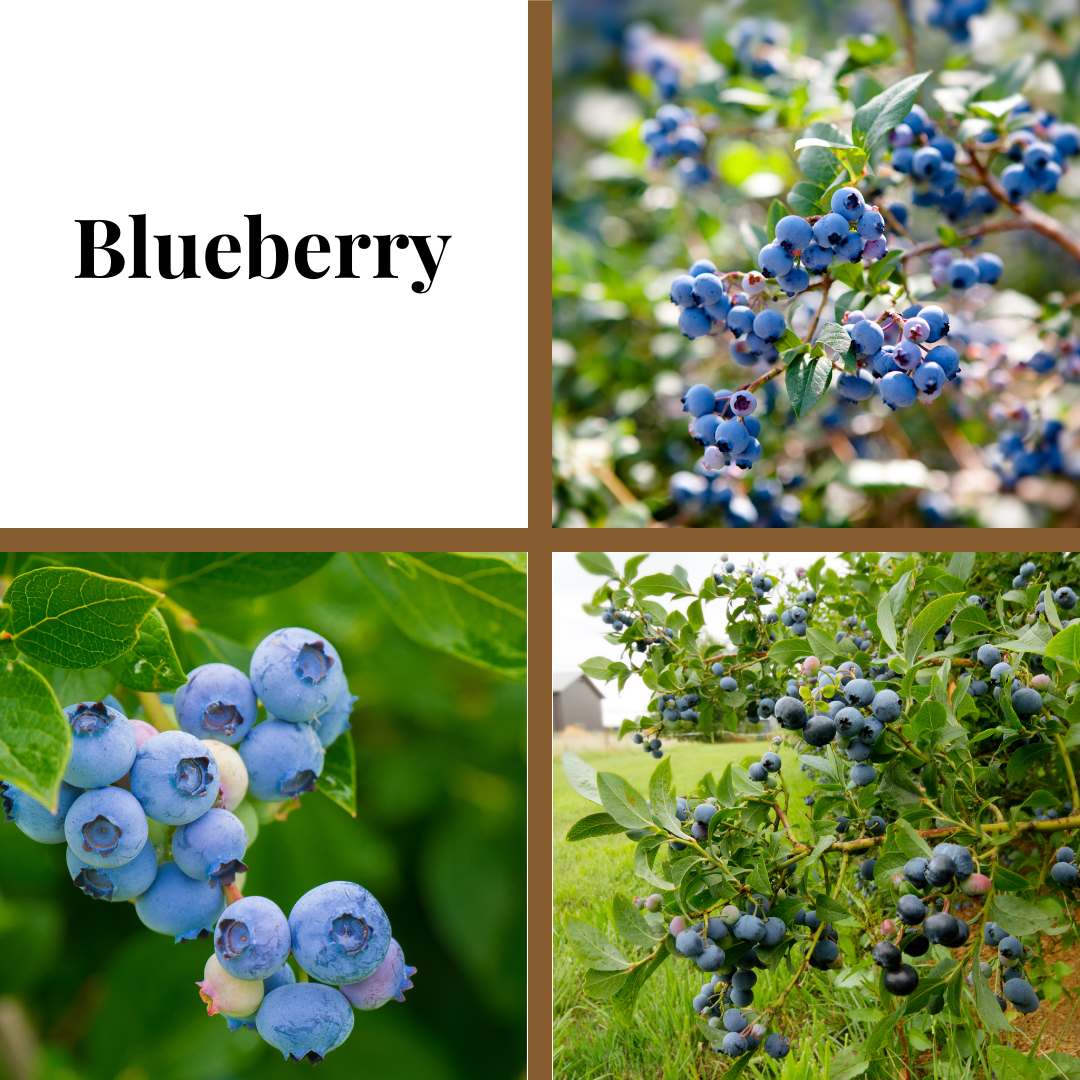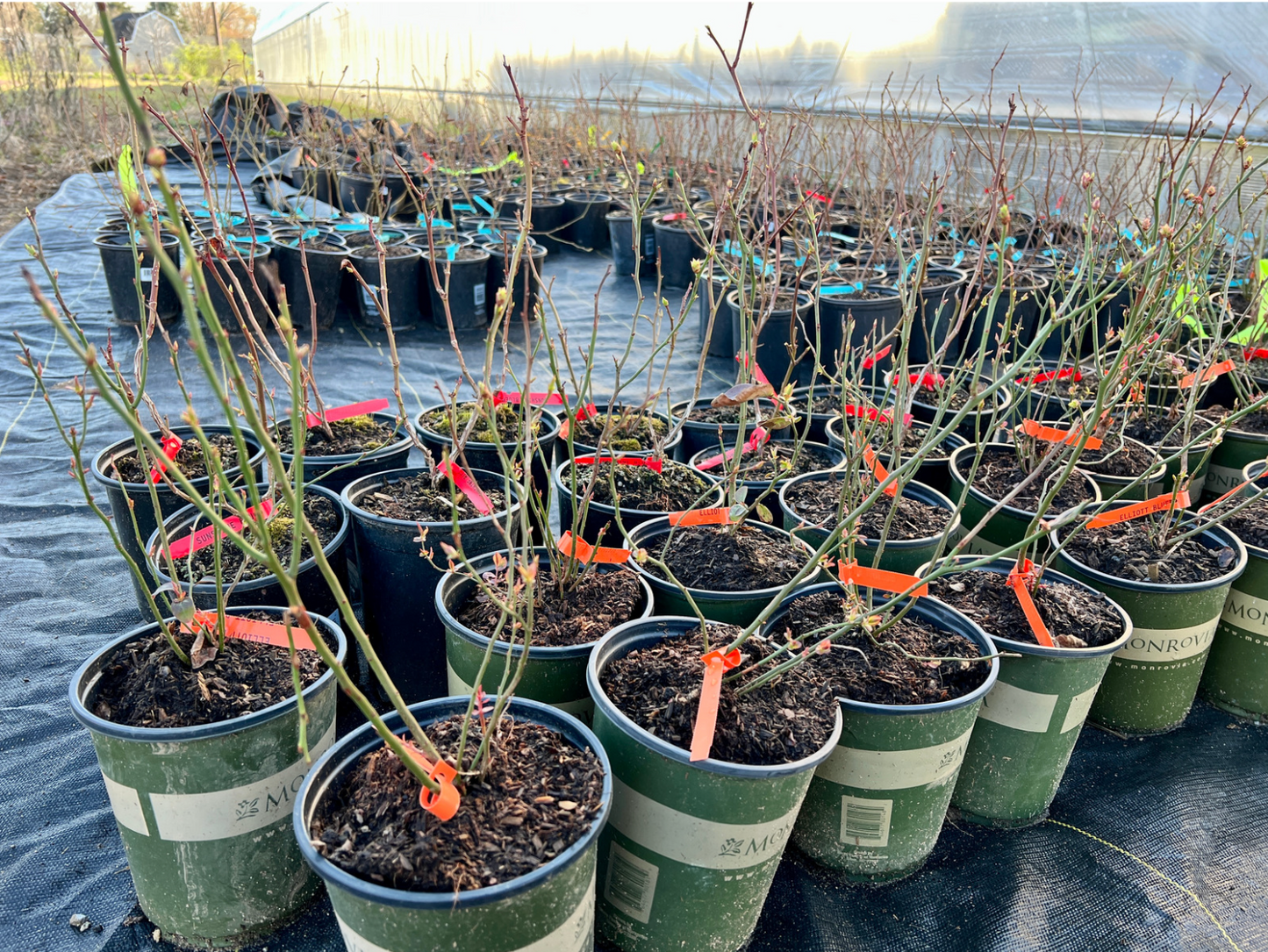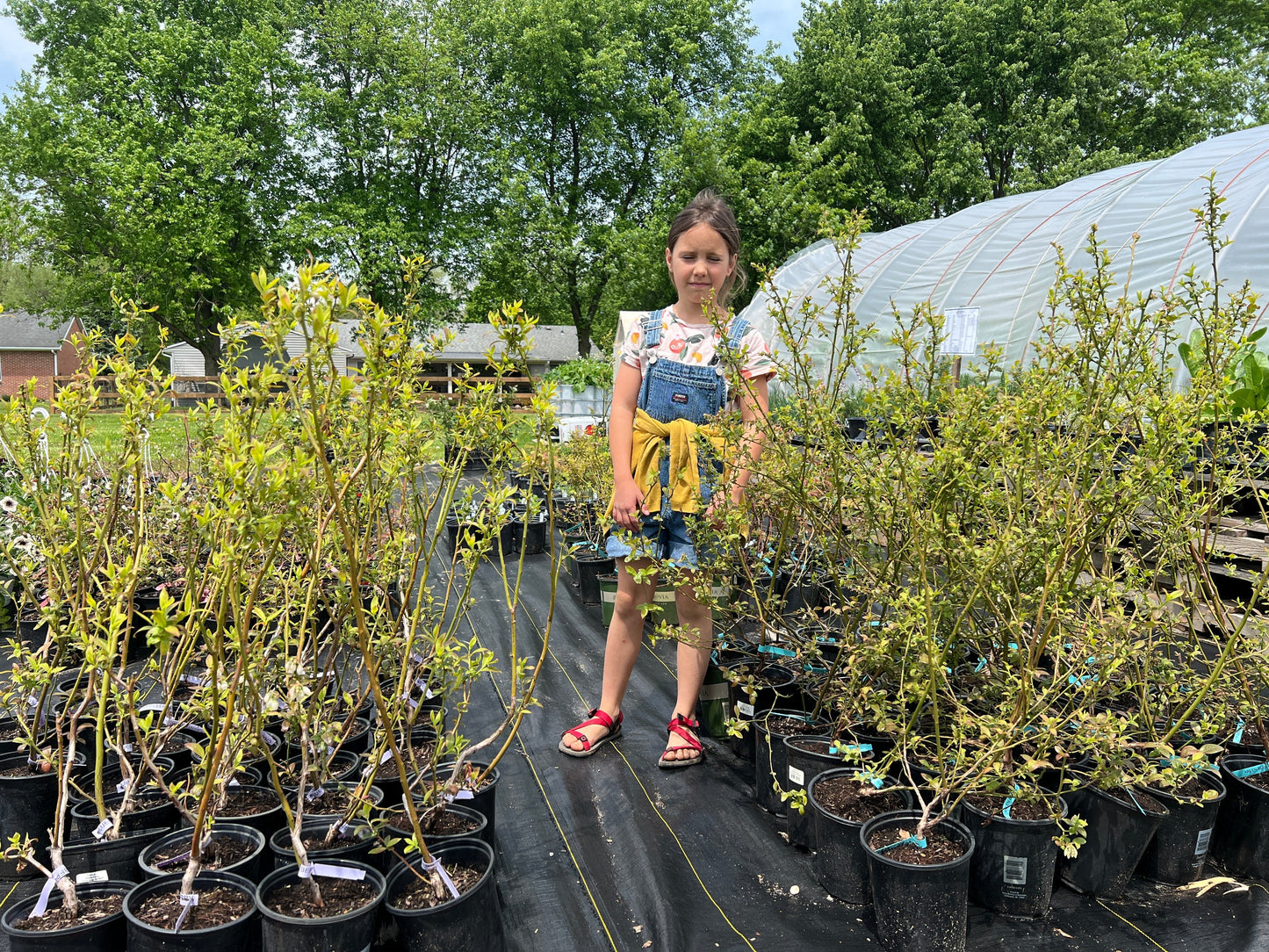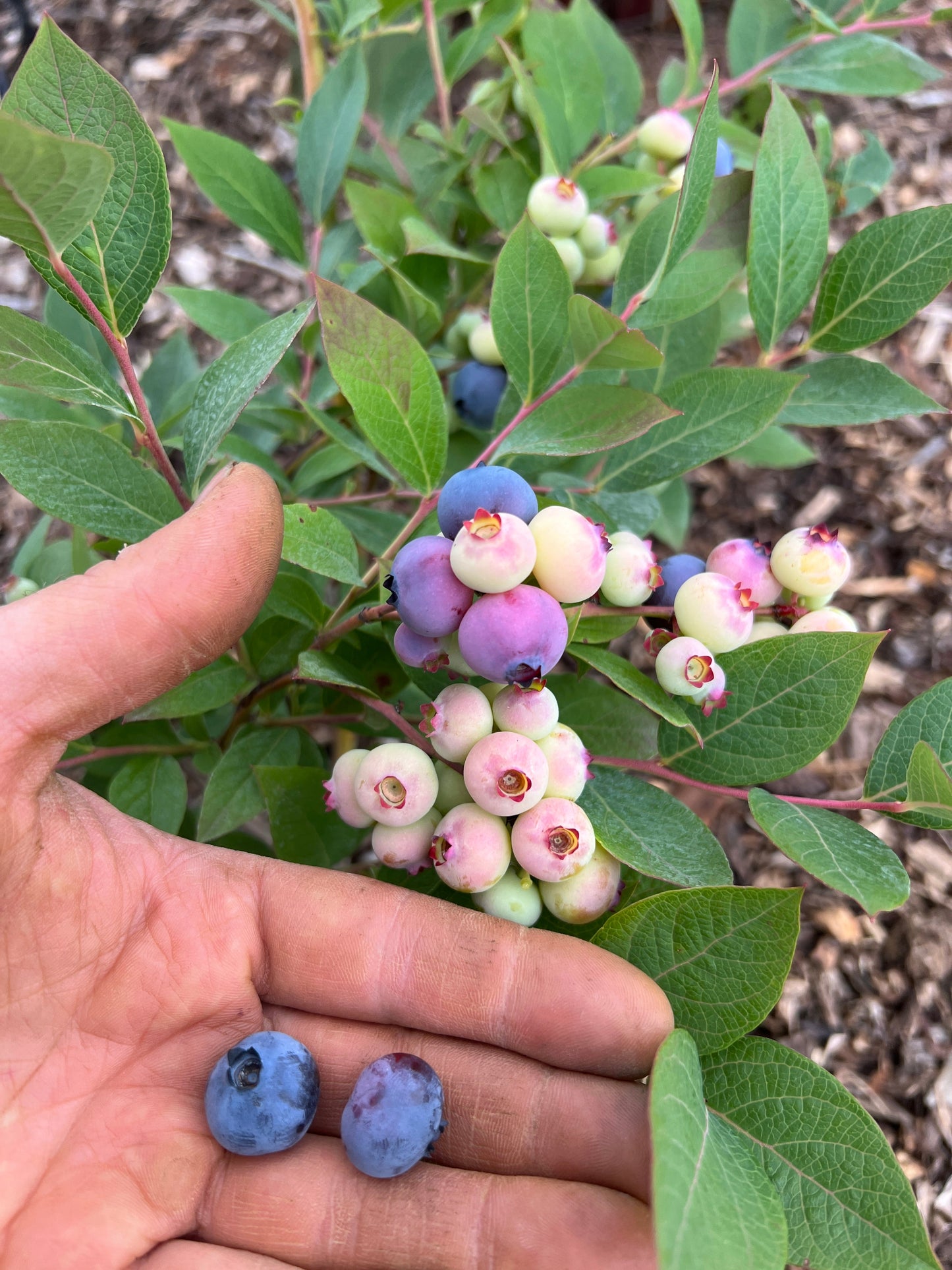Chandler Blueberry Plant (Local pickup only - NO SHIPPING)
Chandler Blueberry Plant (Local pickup only - NO SHIPPING)
Couldn't load pickup availability
**Sorry, our Blueberries are Local pickup only**
The Chandler blueberry, known scientifically as Vaccinium corymbosum 'Chandler', is a standout cultivar developed by the USDA-ARS in Corvallis, Oregon. Introduced to the market in 1995, it is celebrated for its exceptionally-large berries and was primarily developed for fresh market and local sales. Notably, its berries are among the largest of any blueberry variety, making it highly favored for hand-picking due to the size and the slower ripening process of its fruits.
Plants are supplied in 1 liter containers with 12-18" of top growth.
**Sorry, our Blueberries are Local pickup only**
Plant Characteristics
Growth Habit
Chandler blueberries showcase a slightly spreading bush that can reach heights of 5 to 7 feet. This growth habit, coupled with its vibrant burgundy and orange foliage in the fall, makes it not just a productive fruit-bearing plant but also an attractive addition to the garden landscape.
Flowering and Ripening
The Chandler blueberry is noted for its long ripening season, offering gardeners a bounty of the world's largest blueberries, akin in size to cherries, for up to six weeks. This extended harvest period is a unique feature, providing fresh berries over a more extended period than typical for blueberry varieties.
Fruit Attributes
Size, Color, and Flavor
Chandler blueberries are distinguished by their significant size, robust flavor, and beautiful gray-blue color. Their taste profile includes large, full, and robustly flavored berries that are a delight fresh off the bush or in various culinary creations
Geographical Suitability
Chandler blueberries thrive in acidic, well-drained soils and prefer full sun but can tolerate partial shade, especially in hotter climates. Their adaptability to different environments, combined with the need for specific soil conditions, underscores the importance of gardeners ensuring their growing conditions match the plant's requirements for optimal fruit production








